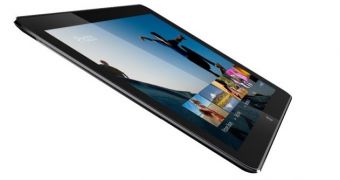We have been hearing this a lot in the past few months. The PC industry is going downwards more and more, but at the opposite end of the spectrum come smartphones and tablets, which continue to be in high-demand with customers everywhere.
So it’s no wonder Intel is doing everything in its power to be a bigger player in the tablet ecosystem. And it seems like slowly things are starting to go into the right direction for the chip-maker.
Intel might be the most prolific entity when Windows-tablets are concerned, but it can be noticed that a growing number of Android tablets (and some phones) now feature the same chip architecture.
We have even seen some of the models Dell and ASUS unveiled at Computex just a few hours ago. And if you think Intel is going to be stopping here, you’re dead wrong.
Chipzilla expects to see 130 tablet models bundling Intel processors to be unleashed upon the market throughout the year.
This number includes slates that have been unveiled plus about a dozen of new models that are on the way.
Furthermore, Intel’s new XMM 7260 LTE-Advanced modem has been available to device makers for testing and implementation, so LTE-capable tablets should be upon us in the near future.
Intel has set out pretty big plans to conquer the tablet space this year, by setting a goal for itself to ship 40 million tablet chips until the end of the year.
The company is actively struggling to achieve this end. For example, last week it was announced Intel and low-cost Chinese chip maker Rockchip have formed a “strategic partnership.”
Basically, Rockchip will become the first company to make use of Intel’s technology in order to produce its own chip products with Intel processor cores.
This new architecture will be called SoFIA and will target low-cost Android tablet, an ecosystem Intel is still trying to penetrate. And by the looks of it, it will achieve this goal soon enough.
Intel plans to be shipping out dual-core SOFIA chips beginning with Q4 2014 and the LTE quad-core version will soon follow suit in the first part of 2015.
Intel is playing the tablet game very aggressively and if you think competitors like Qualcomm and Samsung are sitting back and doing nothing, think again. They also have plans to unveil new chip architecture, but all in due time.
In the meanwhile, Intel seems to be more attracted than ever to the 2-in-1 hybrid space.

 14 DAY TRIAL //
14 DAY TRIAL //